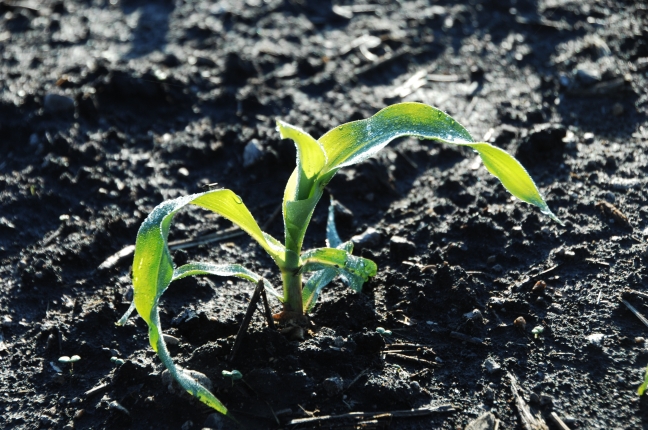
Farmers in other states may cut back on acres devoted to corn and soybeans, but Iowa farmers are expected to expand production, according to ISU experts. Photo courtesy of ISU College of Agriculture and Life Sciences. Larger image.
AMES, Iowa – Farmers across Iowa will soon hit the fields to plant crops for the 2015 growing season. The following agricultural experts at Iowa State University are available for media interviews about the trends and conditions farmers and consumers will be watching as planting gets underway.
Chad Hart, associate professor of economics and grain markets specialist
Hart said some decisions made by Iowa farmers this year likely will buck national trends. Slumping corn prices may lead farmers in other states to cut back on the number of acres they plant, while Iowa farmers are expected to increase acreage this year.
“We’re putting more area into corn and soybean production, and that’s fighting against the national trend,” Hart said. “When you look at Iowa, corn and soybeans are what we do. Even when prices aren’t that great, we continue to do what we do well.”
Hart said demand for Iowa agricultural commodities likely will remain consistent throughout the year unless unforeseen circumstances, such as droughts or floods, change the outlook. Demand for ethanol has flagged in recent months due to lower crude oil prices, while a strong dollar has lessened international demand for U.S. grain exports.
“We’re probably going to see these lower prices holding on for at least a year to 18 months,” Hart said.
Mark Licht, cropping systems agronomist for ISU Extension and Outreach
Licht said the prime window for planting corn in Iowa usually begins around April 15 and lasts to around May 10, though that can shift depending on weather.
He urged farmers to pay close attention to seven-day forecasts when they decide to start planting. The first few days after the seeds are planted are critical to the plant’s development, he said. If there’s a chance soil temperatures might dip below 50 degrees soon after planting, it might be a good idea to hold off, he said.
“The best advice I’ve been giving people really all winter long is make sure you’re waiting for soil temperatures and moisture to be right to plant,” Licht said.
Particularly cool or wet spring weather can shift the ideal planting season a little later in the spring, while warm temperatures may allow farmers to plant earlier than usual.
Last year’s cool April meant the ideal planting date fell around May 10, he said.
Elwynn Taylor, professor of agronomy
Taylor, who studies climate and its effects on agriculture, said subsoil moisture levels are adequate across 80 percent of farmland in Iowa and surrounding states. That indicates crops will be able to establish a solid root system throughout the growing season.
“The crop requires an average of 20 inches of precipitation during the plant’s lifetime to yield an average harvest,” Taylor said. “Usually 25 inches of water is necessary to make a record yield possible. Starting off with nearly 10 inches in the subsoil is considered a good thing.”
Taylor noted that last month was among the driest recorded for the month of March in Iowa. That led to some concern that the topsoil may lack moisture for the growing season, but Taylor said one nice rain can make a big difference to improve surface conditions.
He also said this year will see a weak El Nino, or a band of warm ocean water that develops in the east-central Pacific. Such events often translate to above trend crops if the weather pattern persists through July, he said.
“We have about as much reason as we ever have this time of year to be positive about crops,” Taylor said. “Obviously, there are still plenty of unknowns out there as well.”